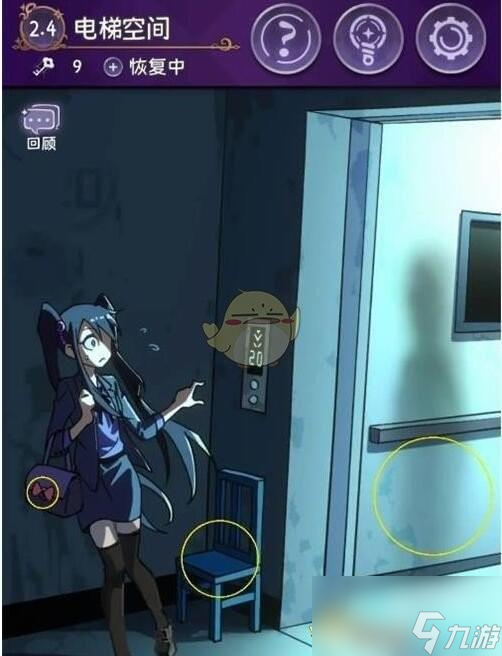给结局猜故事的游戏(给一个结局猜故事)
阅读中有很多的技能和方法,今天我们要谈的是在初读绘本故事,也就是在读图的步骤,如何巧妙使用提问法,合理设置悬念、激发孩子阅读兴趣、培养孩子思考能力。
以绘本 The Mouse Who Ate the Moon (小老鼠吃月亮)为例。
家里孩子识字,家长可以把绘本的标题和旁白先盖住来进行第一部分的读图。
标题部分:
封面
1.What can you see?(请问你看到了什么?)
孩子能说出故事的关键词:a moon ,a mouse
接着让孩子猜一猜故事的名字,鼓励孩子大胆猜测,那么很可能孩子能猜出最接近的标题是: mouse and moon或者moon and mouse.(记得表扬孩子每一次大胆的猜测).
之后揭露答案--The Mouse Who Ate the Moon (小老鼠吃月亮)
2.Who ate the moon?(谁吃了月亮?)
The mouse ate the moon.(小老鼠吃了月亮)
Can you eat moon?(你吃得到月亮吗?)
No.(吃不到)
Can your dad eat the moon?Can...eat the moon?(连问好几个家人朋友,得出结论大家都吃不到)
Why can the mouse eat the moon?(那为什这只小老鼠能吃到呢?)(不一定是真要回答,只是引发孩子好奇思考)
展开全文
接下来可以就“吃月亮”部分让孩子提问(Do you have any questions?)【这部分如果孩子英语水平不够可以让孩子中文提问,你自己翻译成英文】
自己先示范。How can this mouse eat the moon?(小老鼠怎样吃到月亮的呢?)
孩子可能提到的问题:1.小老鼠真的能吃到月亮吗?2.月亮是什么味道的呀?
然后你就说:那我们一起来读一读这个故事就知道了。孩子脑海中有很多的疑问等待故事回答,所以他会非常的认真。
内页部分:
P1-P2
到了内页主要是根据故事情节和画面进行提问,可以指着老鼠问:
-Who is this?
-This is a mouse.
然后用手指从老鼠移到月亮,问:
What was the mouse looking at?
She was looking at the moon.
P3-P4
手指着月亮语气好夸张的说:Wow, look at this moon.The moon is beautiful.
指着老鼠说:Look at the mouse.What did she want to do?猜一猜,小老鼠想干什么呢?【这里一上来自己就很夸张的说月亮好漂亮,然后问孩子她想干嘛,那孩子通过“月亮好漂亮”结合标题“吃月亮”会猜小老鼠想吃月亮】。那我们紧接着就说出原文:I would love to have a piece all of my own.(要是我有一小块月亮就好了。have有“拥有”的意思也有“吃”的意思,所以我觉得如果孩子能猜到吃月亮我觉得也是可以表扬的。)

P5-P6
一翻到这一页,建议马上切换成和小老鼠同款表情。
然后很惊讶的指着香蕉问“What's this?"
孩子应该会回答banana,那就接着问:为什么小老鼠看到banana这么惊讶呢?(Why was the mouse surprised?)引导孩子将香蕉和月亮联系起来。
接着:猜一猜小老鼠看到了月亮想干嘛?(What would the mouse do?)
P7-P8
The little mouse rode on the "moon".And smelled it.(小老鼠骑在上面,又闻了闻。)【模仿闻起来很美味的动作。】
What would she do next?(接下来又会做什么呢?)
P9-P10
装出很惊讶的表情,问:What was the mouse doing?-She was eating the "moon"
终于她实在忍不住了,她说“I'll just have a tiny nibble."(我就吃很小很小一口。)【用手指表现出tiny nibble的感觉。】
猜猜看她真的只吃一小口吗?(Did she just have a tiny nibble?)
P11-P12
Oh,no!指着半边被吃掉的香蕉继续问:她真的只吃一小口吗?(Did she just have a tiny nibble?)-No!A half!
But look at Mouse!【指着小老鼠的表情,并模仿。】
The mouse was happy or unhappy?【这里用选择疑问句,孩子知道老鼠肯定不开心,所以不会选happy,那他就会选unhappy,通过这种方式就学到了新词“unhappy".】
来一个:Why? 开放性,这里让孩子充分发挥自己的理解和想象,这里是让孩子学会体会别人的情绪及分析原因。不管孩子说什么都表示理解和认同。
然后指着小白兔的耳朵问:Oh,what's this?不管孩子猜没猜出来不表态,然后翻过来下一页宣布答案。
P13-P14
Yes, it's Rabbit(名字).
Look at Mouse.Mouse was unhappy.Guess! What would Rabbit do?【教会孩子表达关心的方法。哪怕他现在不知道说什么但会认真听。】
Rabbit就说“What's the matter,Little Mouse?"【这里可以重复两遍,帮助孩子增强印象。】
Little Mouse said:I have eaten some of the moon.and now it won't be round any more.
小老鼠为什么不开心呢?因为她担心月亮再也不圆了。
Rabbit 安慰她说:Nobody can eat the moon.
指着小老鼠问:Is she happy again?-No.
她说:Well, I just did.【注意模仿老鼠的表情和语气】
Little Mouse walked and walked.Then what did she see?
P15-P16
指着mole的头说:She saw her friend mole.
Guess! What would Mole do?【试图让孩子回忆句子“what's the matter?"】

他也很关心小老鼠。
Mole said“What's the matter,Little Mouse?"
Little Mouse said:"I have eaten some of the moon.and now it won't be round any more."
Mole安慰她说:"Nobody can eat the moon."
Is mouse happy now?
No! She said:"Well, I just did."她还是不相信mole说的。
那Rabbit 和Mole该怎么办呢?What should they do?【让孩子发挥自己的小脑筋思考要是自己的朋友不相信自己说的,或者说不开心,应该怎么办。不论孩子说什么都可以抓住机会互动,不是太大的问题都不要否定他。】
再回到故事:What will Rabbit and Mole do?
P17-P18
Rabbit and Mole went to Mouse's hole.
"We want to show you something."they said.
What would Rabbit and Mole show Little mouse?
P19-P20
指着moon, Look!They show rabbit the mooooon!顺势翻到下一页。
P21-22
Look at Little Mouse.Is she happy?
She was very very happy.She was overjoyed.
Why?
Because the moon is round.Little Mouse didn't eat the moon.
现在可以再次把阅读之前提到的问题拿出来一起回答了
1.小老鼠真的能吃到月亮吗?
没有。
2.那小老鼠吃的是什么呢?
香蕉。
3.小老鼠吃掉了整个香蕉吗?【提醒孩子小老鼠还有一半的香蕉】
没有。
What will Little Mouse do?【引导孩子关注小老鼠的行为,让孩子知道,好朋友帮助了你,可以把好吃的分享给朋友表达感谢,做一个懂得感恩和分享的人。】
P23-P24
So Little Mouse share the banana with her friend Rabbit and Mole.They are all happy.【他们每个人都因此获得了快乐。】
故事到这里读图的部分就可以结束了,孩子已经被你环环相扣的提问深深的吸引并且爱上了这个故事。
整个故事图片非常简单,人物也很少,情节也很简单,如果只是这样随便翻看并未有很大的乐趣,但是如果用一个个的问题串起来,环环相扣,整个故事就变得非常有吸引力。
你也试试吧。
本文由“洛拉老师的日常”发布 ,2021年9月5日









评论